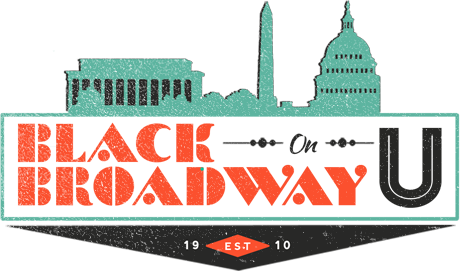

![]()
At the end of the 19th century and for the first half of the 20th century despite segregation, D.C.’s historic Black greater U Street community prospered and built a self-reliant economic, social, civic, and cultural existence. During the height of the Jim Crow era, this influential Black U Street neighborhood of extraordinary achievers once known as “Black Broadway” birthed D.C.’s Black Renaissance and served as a prominent symbol of black culture and sophistication amid racial and political tension in America.
Anchored by the famed Howard University (founded in 1867) some of the African American pioneers in science, civil rights, architecture, education, business, medicine, literary and performing arts you might have encountered on U Street/Black Broadway; Madame Lillian Evanti (first black international opera star), Carter G. Woodson (Father of Black History), Mary Church Terrell (one of the first African-American women to earn a college degree, civil rights activist and suffragette), Jesse H. Mitchell (founder/owner, Industrial Bank of Washington), Dr. Charles Drew (surgeon and researcher who organized America’s first large-scale blood bank), Zora Neale Hurston (anthropologist, author, poet), Georgia Douglas Johnson (one of the earliest black female playwrights/organizer “Saturday Nighters” literary salon), Mary McLeod Bethune (prominent educator/First Lady of Civil Rights Struggle) and Charles Hamilton Houston (prominent civil rights lawyer known as “The Man Who Killed Jim Crow in America”) laying the foundation for the New Negro and modern civil rights movements. The neighborhood was also home to the great American composer, Edward Kennedy “Duke” Ellington, first-rate AA-owned theaters and nightclubs that hosted the biggest stars in American music — Cab Calloway, Pearl Bailey, Louis Armstrong, Sarah Vaughan, Billie Holiday and Jelly Roll Morton, among many others.
Remembering U Street/Black Broadway: Flashback to May 1940, the illustrious actress/singer, Pearl Bailey (portrayed by actress, Roz White) sits in her dressing room getting dolled-up for her performance at U Street’s historic Lincoln Theatre in Washington, D.C. Pearl shares her tale about the music, arts and culture, entertainment, and history during D.C.’s Black Broadway on U heydays despite the tough Jim Crow laws, this black gateway – – strived and thrived.
A BIT OF HISTORY: Ms. Bailey is credited with coining the phrase “Black Broadway” for D.C.’s historic black U Street community, where as a teenager she jumpstarted her singing and dancing career at local venues such as Republic Gardens, Howard Theatre and Jungle Inn.

Yet, not only did this Black U Street community flourish and develop self-sufficiency; it was nationally significant for its stance against the injustices of segregation, spearheading some of the nation’s first civil rights protests while simultaneously embracing the highest standards of culture and intelligentsia experienced by blacks anywhere in America at that time, prompting Langston Hughes, the venerable voice of the New Negro Movement (who lived along the U Street corridor from 1924 to 1926) to write an Opportunity Magazine article, Our Wonderful Society: Washington, circa August 1927.
![]()
Launched in February 2014, the Black Broadway on U: A Transmedia Project is a groundbreaking multi-platform story and public history initiative created to amplify, chronicle, preserve and enhance, the under-told story, cultural legacy, local memories and voices of Washington, D.C.’s marginalized Black community along the historic greater U Street community when it was known as “Black Broadway”, a city within a city. This transmedia story represents several distinct, yet interconnected multi-platform (digital media and immersive) components. Through the use of interactive and social media content, educational resources, mapping, archival photos, traveling, pop-up museum exhibit, short films, oral histories and stories and our website aka “living digital history book”, the project seeks to connect today’s, future and greater audiences to the “unsung” social, economic, historical and cultural influence and civic impact of this Black U Street community aka “Black Broadway” trailblazers on Black America and America at-large. They are “our ancestors, our torchbearers” who overcame America’s and our nation’s capital’s racial and social barriers making considerable, significant contributions to enhance the civic and cultural fabric of America. Most importantly, the project will shed light on the “hidden history” that lies beneath the surface through the lens and voices of native Washingtonians who remember it best.
![]()


